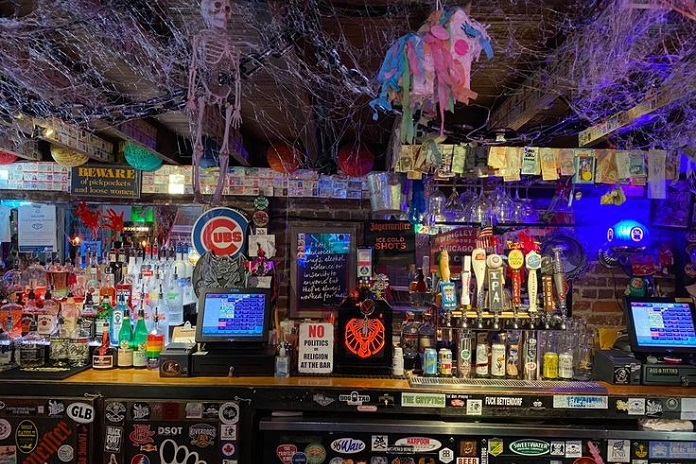Did you know that the story behind the dive bar has a very long history, In the past time, prohibition blocked the manufacturing, sale, and transportation of alcohol, and led to the rise of multiple illegal drinking establishments all over the U.S. Later on, the repeal of this law ended this flourishing illegal drinking industry, but its popularity spiked again by the ’70s. The Prohibition and the Beatnik era — dive bars were never part of popular culture. “Barfly” and David Lynch’s film “Blue Velvet,” plus mentions in pulp novels and noir thrillers took the humble dive bar to new heights.
It became ‘cool’ to celebrate low culture. The end of the ’80s saw many bars adopting the name ‘dive’, even though these establishments were brand new.
Source: Revry The dive in the dive bar is usually referred to as the entrance of the bar is located. These days, many kitchens have begun to adopt gas or coal ovens instead of the larger wood-fired ovens, leading to extra spaces being created under existing restaurants. Also, as per my research, it found that the Oxford English Dictionary says, the reason we use ‘dive’ to describe a ‘drinking den’ comes from the fact that such places were in cellars or basements that people could ‘dive’ into without being observed by others.
Many people credit author/poet Charles Bukowski’s semi-autobiography, “Barfly,” hailed as an ultimate ‘dive bar’ story even today, as being responsible for bringing dive bars to the cultural mainstream.
Seagram’s association associated that with this day, much like the dive bar, this drink has also seen a shift in status. By creating this day, they have embraced this shift and have given people a reason to celebrate dive bars and the drink, too.
Along with this the main aims of the company are to help preserve the dive bar, supporting the National Trust for Historic Preservation with various initiatives.
July 1871 (First Use of the Word ‘Dive’)
‘Dive’ is first used in relation to drinking establishments — according to the Oxford English Dictionary, this word appears in the New York Herald: “One of the gayly decorated dives where young ladies […] dispense refreshments to thirsty souls.”
1920–1933 (Prohibition Brings in Illegal Drinking Establishments)
As the manufacturing, sale, and transportation of alcohol is forbidden, illegal drinking venues start popping up — the most common of these is the speakeasy.
1980s (Dive Bars Go Mainstream)
Films like “Blue Velvet” and “Barfly,” among others, become widely popular — they feature dive bar establishments and cause an increase in popularity for this culture.
1980s (Bars Adopt the Word ‘Dive’)
The trend of naming bars — all bars, whether old or new — as ‘dives’ begin.
2018 (Our Day is Born!)
National Dive Bar Day is celebrated annually on this day, from this year onward.
It’s too dark or too bright- Dive bars are either lit up like a Christmas tree or use the bare minimum amount of lighting.
They have a history- A true dive bar has seen it all — multiple owners, crazy customers, and even political ups and downs.Bathroom reading material- Step into a bathroom at a dive bar and you’re bound to come out with intimate knowledge of a stranger’s love life and random philosophical sayings, which are written all over the walls.They’re older than you- Dive bars don’t try to be dive bars, they just are, and this usually comes from long years of working at the same thing.Everybody knows your name- Like the “Cheers” title song, a good dive bar attracts regulars who will learn your name (or, you know, your face) as you become a regular yourself.
When is the National Dive Bar Day?
We celebrate National Dive Bar Day on July 7th of every year.
What is 7&7?
It is mentioned that they choose the seventh day of the seventh month for the special dive bar drink, the 7&7, which is made with Seagram’s Seven Crown and 7-Up.
